Grounding electronic equipment for personal safety and clearing of faults is no different than that of any other equipment. Safe grounding requires fast opening of circuit breakers or fuses and minimization of voltage differences between exposed metal surfaces on all of the involved electrical system and equipment, to levels that are safe for people.
What makes electronic systems different is the sensitivity of their circuit components to relatively small transient currents and voltages. It is also inherent in the nature of solid state devices to be very fast, so they are affected by equally “fast” electrical disturbances. Even lightning is a slow transient compared to the response of almost any electronic device.
Typical threats to proper operation of electronic devices and systems include:
1. Lightning
Direct strikes, but the effects also include overhead cloud-to-cloud, and nearby strikes causing induced voltages
2. Switching Transients
Switching transients from power network operations and power factor capacitor switching, lightning arrestor operation, and fault clearing activities- especially on nearby power circuits.
3. Static electricity
Directly applied arcs to the equipment, but sometimes arcs near the equipment will also affect the equipment.
4. Electrical fast transients
Typically as caused by arcing contacts or collapsing magnetic fields in the coils of contactors in equipment, usually very near the affected equipment
Basics of Transient Problem Solving
Solving transient problems is never easy. They may be random or repetitive. In general, they have waveshapes which are not easily analyzed. Transients though are capable of being tamed by:
1. Limiting overvoltages (surge voltages) on the ac power conductors with surge protective devices (SPDs)
2. Reducing the chances of electrical noise getting on power circuits connected to electronic equipment and the data signal circuit cables that interconnect the units of equipment. This can often be accomplished by observing the requirements for proper routing and grounding of branch circuits including their conduits, and ensuring adequate separation of power and data signal wiring.
3. Proper grounding involving the correct installation of equipment grounding conductors of all types, and neutral terminal grounding and bonding at the service entrance and for separately derived ac systems.
While the above are all within the scope of the contractors’ job, we want to emphasize that the equipment supplier can and must provide equipment that can “live within” practical levels of transients as are known to exist on the typical commercial and industrial site. Otherwise, extensive effort and great expenditures may be needed in order to get this kind of too-sensitive equipment to work in an acceptable way.
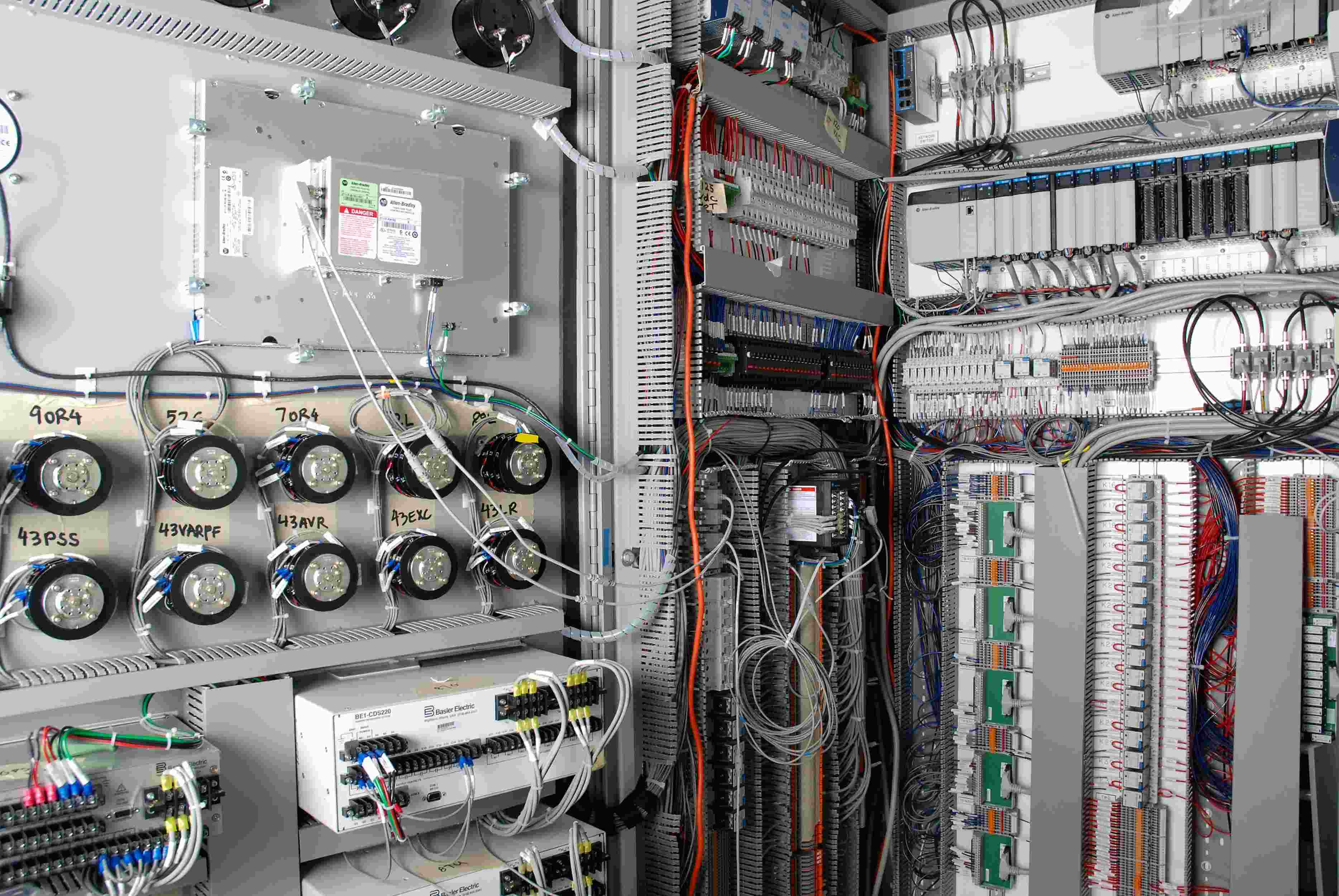
Credit: turbinetech.com
Interconnected Electronic Equipment Systems
This section deals with grounding of electronic systems that are interconnected by signal, data, or telecommunications cables. It is helpful to think in terms of two kinds of grounding with this kind of equipment:
1. Safety grounding for fire and personnel protection. This kind of grounding also helps to provide for the protection of equipment to minimize damage from electrical system faults and transients such as lightning.
2. Performance grounding for the protection of data circuits and solid-state components within various items of interconnected equipment making up an electronic system. Sometimes this is called “computer” or “electronic” grounding but these are not very accurate terms. Note that the protection of data circuits does not have to involve earth grounding electrode connections, although good grounding to the building service equipment’s grounding electrode system makes this protection a lot easier.
For example and as mentioned above, airplanes flying through lightning storms have no earth grounds connected to them but, while experiencing lightning hits, are probably safer than many land-based systems. And after a lightning strike all of the electronic equipment within the aircraft is expected to continue to work in flawless fashion.
Some Important Points About Grounding
Point #1
Typically the safety grounding of equipment is exactly the same for electronic equipment as it is for any other kind of apparatus, whether it is a refrigerator or a printing press. The “green wire” and conduit/raceway system’s grounding which is well documented in the NEC and other codes, defines these requirements completely.
Safe equipment grounding requires fast clearing of circuit breakers or fuses and minimization of voltage differences on exposed metal surfaces of equipment to levels that are safe for people. This is called the control of “touch potential.” There is absolutely no conflict between NEC defined grounding and the more specialized grounding and bonding practices described in (2) below.
An unnecessary conflict can be created however, such as when someone attempts to create a “separate”, “dedicated” or “clean” grounding connection that is not permitted by the NEC!
Point #2
Protection of data circuits generally requires additional considerations beyond the intent of the NEC, but not in violation of it. Protection of data circuits from disruption or even damage does not always involve grounding, although good grounding makes this protection a lot easier.
Aircraft have no earth grounds while they are flying. The airplane carries its own “grounding” system for its ac and dc systems, and signal grounding purposes. This grounding system is entirely metallic in nature and it is often called a self contained power and signal reference system, which is a more accurate description. Even direct lightning “hits” are not likely to cause equipment damage or even disruption to signals.
Point #3
The circuits of most electronic systems are almost always sensitive to voltages of a few tens of volts or even to as little as one or two volts. As a result, these systems are designed with great care to keep transients out of the actual circuitry and off of the signal paths between interconnected units of a system.
To accomplish this, some equipment uses electrostatically shielded isolation transformer techniques and ac-dc power supplies designed to reject transients. However, for these techniques to be fully effective, good grounding and bonding practices exceeding those required in the NEC, must often be employed.
Point #4
Data signals inside most electronic systems consists of bits of information processed as square waves or impulses at about 5 volts in amplitude and clock speeds which can exceed 200 MHz. Data transferred between equipment often has a magnitude of 12-18 volts, and the speed of transfer is lower than that of the signal processing speed available inside of the equipment.
In any case, the signal rise-times of the clock and most other signal pulses such as those used to transfer bits, are far faster than the typical lightning strike. Yet, even at these speeds the systems can be made to have high reliability and to be relatively immune to interference if good grounding and bonding practices are followed.
Point #5
Lightning related waveforms are usually the “worst case” situation for transients on most ac power system wiring and related grounding systems.
This makes lightning the principal threat. More information about lightning and its typical waveforms may be obtained by consulting ANSI/IEEE Std C62.41-1992
Point #6
Fast electrical transients are created in some equipment with electromechanical contactors. The interference problem from these items could be serious, but it is easy to solve by installing RC snubbers (consisting of resistors and capacitors) across the contacts, coils, or both items of the offending device. This kind of interference with electronic circuits can sometimes be controlled by more stringent shielding, or grounding and bonding practices.
However, the root cause of this kind of problem is really not a shielding, or grounding and bonding related problem. Instead it is an equipment circuit modification problem and this is the kind of thing which typical electrical contractors should normally not be expected to identify or to solve.
Harmonics
Note that by itself, harmonic current and voltage generation is not a grounding problem unless due to a miswired circuit or a component’s failure in which some of the harmonic current gets impressed onto the equipment grounding system. In this case, the effort is not to stamp-out the harmonics, but to find the miswire or failed component and to effect the repair.
Harmonics are often an important safety concern on the neutral conductor of a three-phase, wye-connected ac system where it is supporting line-to-neutral connected nonlinear loads- such as computers, etc. In this case the entire neutral path must be increased in ampacity to as much as 200% of the ampacity used for the related line conductors. This is regularly done in order that a fire be avoided due to current overload from third harmonic and other odd multiple harmonics called “triplens”.
Other steps may be required to prevent harmonics from interfering with proper system operation. However, the exact method and point chosen for grounding of the neutral conductor at the ac supply source, will not improve any problems associated with harmonics. Ungrounding of the neutral is likely to be an NEC violation in almost all designs, and would decrease personnel safety.
Harmonic Current Filters (Traps)
Harmonic filters commonly called “traps” are not grounding problems unless they are miswired to direct the current through them into the equipment grounding system. This is an unusual situation and involves an NEC violation which would need correction. Typically, the trap is connected line-to-line, line-to-neutral, or both, but never to equipment or any other ground.
Surge Protective Devices (SPD) And Grounding Connections
In addition to line-to-line and line-to-neutral connections, surge protective devices (SPDs) are also connected to the circuit’s equipment grounding conductor.
Any transient voltage which then operates the SPD and causes current flow through it and to the equipment grounding conductor, raises the ground potential as measured at the installation point of the SPD and to the remote “ground” used as a zero voltage reference. Because SPDs may be subject to very high voltages with steep (e.g., fast rise time) wavefronts, the concurrent effects on the grounding system may be very severe.
Some Practical Recommendations
These are some of the practical electrical installation considerations we recommend:
Recommendation #1
Field installed electrical grounding/bonding conductors routed between the metal frame or enclosures of separate units of electronic equipment should be connected to the NEC “green wire” grounding system at both ends, not isolated or insulated from it.
Recommendation #2
Isolation transformers with electrostatic shielding between the windings are readily available and should be employed to interface the electrical system to the panelboard used to supply branch circuit power to the electronic equipment. The installation of both the transformer and panelboard(s) should occur as physically close to the served electronic equipment as is possible.
Note that the electrostatic shielding can provide useful attenuation of most types of common mode transients up to about 1000:1 (e.g., -60 dB). Attenuation figures above this value are generally unrealistic and are not likely to be provided by a transformer that is installed into a real-world installation and in conformance with the NEC. In any case, follow the transformer manufacturer’s recommendations closely to achieve the maximum benefit, but only if the instructions conform to the NEC.
Recommendation #3
Interconnecting cables between electronic system enclosures in equipment rooms should be routed in close proximity to the structural subfloor. This is especially the case if it contains substantial metal structures that are well grounded such as steel decking, etc.
The best results however, are obtained when these cables are laid in close proximity to a specially installed signal reference grid, such as is recommended to be installed under a raised floor normally used in a computer room. If interconnecting cables are routed between locations in a cable tray or wireway, then the use of random lay is preferred rather than “neat” bundling in these forms of raceway.
(This is recommended as random lay decreases the coupling of noise from one adjacent conductor into the other when they are laid parallel to one another for any significant length.)
Recommendation #4
If wireways are used to route cables, they should be made from metal, be well and continuously grounded and bonded, and be equipped with a tight cover such as one fastened by screws. Ladder tray is less desirable than solid-bottom tray.
Recommendation #5
Field installed data cables should normally be separated from power cables and conduits to the greatest practical distance. This reduces unwanted coupling between the two circuits. To avoid noise coupling problems where one circuit crosses over or under the other, try to make the crossover at rightangles.
Recommendation #6
Where metal raceways or conduits are used to contain interconnecting data cables, it is recommended that additional bonding connections be made at several points along their entire length (Black plate) to ensure good longitudinal coupling.
In addition to being well grounded/bonded to the equipment at the ends of the run, the conduit or raceway should also be bonded to any nearby structural steel along the run.
Recommendation #7
All metallic piping, ducting, conduit/raceway, wireway and cable tray located within 6 feet (horizontal or vertical) of any installed Signal Reference Grid (SRG) must be bonded to the SRG. This is especially important where these conductors enter or leave the area defined by the SRG. If this is not done, then lightning side flash may occur from the above or any nearby grounded metal items to the SRG.
A side flash can cause a fire, electronic circuit damage, or both. More about the subject of side flash may be obtained by reference to ANSI/NFPA780-1995, the National Lightning Protection Code.
Recommendation #8
In addition to any NEC requirements, the neutral terminal, such as the Xo terminal on a wyesecondary connected transformer of a separately derived system, should be connected to the SRG and if available, also to the closest building steel.
Recommendation #9
Be sure to bond the SRG to any nearby accessible building steel so as to create many points of grounding/bonding. This is important to do along the SRG’s perimeter and for any steel that penetrates the SRG’s surface.
Recommendation #10
Grounding for ac systems and equipment must conform completely to NEC requirements. Also, if the electrical or electronic equipment has been tested and listed by an NRTL (Nationally Recognized Testing Laboratory, such as UL), then there may be additional or special grounding/bonding requirements which must also be met if proper operation is to be obtained.
Again, any use of a “dedicated”, “clean” or other non-NEC allowed connection, such as one which is separated from the building’s service grounding electrode and the associated equipment grounding conductor system, is totally against the intent of this article. Only grounding systems and connections which meet National Electrical Code requirements are suitable.
Recommendation #11
Special care must be used to assure proper grounding if NEC permitted isolated grounding is specified. “Isolated/Insulated grounding” (IG) must be per NEC Section 250-74; Connecting Receptacle Terminal to Box; exception No. 4; and Section 250- 75, Bonding Other Enclosures for field wired (e.g., direct) branch circuit connections to electronic equipment.
Recommendation #12
In particular, no attempt must be made during or after installation to separate the electronic system’s equipment grounding conductors from the ac power system’s equipment grounding conductors and its associated earth electrode grounding connections.
Such separations would violate the NEC and produce potential electrical fire and shock hazards. They would also be likely to damage circuits inside the related electronic equipment, or to at least degrade the operation of it.
Recommendation #13
Note that the use of the IG method even if it follows NEC requirements, does not always improve the performance of equipment. In fact, the use of the IG wiring method is just as likely to make things worse or to result in no observable change to the operation of the equipment.
There is usually no way to predict the benefits if any, of isolated ground circuits except by direct observation and comparison between solid grounding (SG) and IG methods in each case.
Recommendation #14
It is relatively easy to convert existing IG circuits to SG circuits on an as-needed basis. On the other hand, it is generally both impractical and not cost effective to convert an existing SG circuit to an IG style that conforms to NEC requirements.
Accordingly, circuits used to supply power to electronic equipment can be designed and first installed as IG types, so that they may later be converted back and forth between IG and SG as needed.
Recommendation #15
The equipment grounding conductors in a feeder or branch circuit must always be routed within the same conduit or raceway containing that circuit’s associated power circuit conductors. This also applies to flexible cord and cable assemblies.
Recommendation #16
Where transfer switches (including those found in UPS systems) are used, the possibility of common mode noise is not removed. Proper grounding between alternate sources of power is required, usually by solid interconnection of the two system’s neutrals, but with only one of the two ac systems being the one with the neutral grounded.
Unless the two involved ac systems are installed physically adjacent to one another, a ground potential shift disturbance may occur during transfer operations on the switch. This shift in ground potential can then unwantedly introduce common-mode noise into the load being served by the switch.
Recommendation #17
Ground potential-shift problems and common-mode noise problems in general are avoidedan isolation transformer is installed adjacent to the served loads and is positioned between the output of a transfer switch and the input of the served electronic loads.
In these cases the neutral terminal on the secondary of the isolation transformer is solidly grounded and both the transformer and electronic load equipment are made common to one another for broadband grounding purposes, if they are also connected to an SRG that has been installed in the equipment room and just beneath the equipment
Recommendation #18
More than one isolation transformer may be used in the above manner if the site is large. For example, multiple isolation transformers installed and grounded to an SRG in an equipment room are a recommended practice for larger sites.
Also, multiple, separated, but SRG equipped rooms may each be provided with its own isolation transformer and grounded as above.
Recommendation #19
Specially designed, “original” forms of grounding which are not in literal compliance with NEC requirements are not recommended. This includes approaches to grounding called “clean”, “dedicated”, “single point” and other forms of “isolated” grounding not permitted by the NEC.
The authors are aware of instances where all grounds are initially properly connected together with a jumper which the owner or operator can later remove at his discretion. Since removal of this connection creates both an NEC violation and fire/shock safety hazard, the authors do not recommend this approach!
Recommendation #20
Surge Protective Devices (SPD) provide overvoltage protection at various points for power and data circuits wherever they are properly applied. Proper use of SPDs is highly recommended.
Recommendation #21
After the electrical installation is complete, a careful inspection of the wiring is needed to ensure safety and performance criteria have all been met.
Regarding grounding, the following should be part of the inspection process:
Rule 1
Misidentification of conductors such as the neutral and “green wire” safety grounding conductors, often occurs. The problem shows up at the point where they terminate. A mistake of this kind is a serious violation of NEC Section 250-21, and others.
Cross-connection between neutral and ground conductors results in unwanted current flow in the equipment grounding system, but will normally not cause an overcurrent protection device to operate. Hence, there is often no immediate indication of a problem such as when the power is first applied. Therefore, these conductors and connections need to be verified before power is applied.
Rule 2
All metallic conduit, wireway, raceway and other metallic enclosures, must be wellbonded along their length to ensure end to end continuity.
They should also be well grounded at multiple points along their length to building steel and SRGs within 6 feet to provide effective high frequency grounding. Effectively grounded, end terminations to and from served equipment are most important.
Rule 3
Ensure that the shortest possible lead length has been used to connect SPDs to the conductors they are protecting. Ideally, the SPD would be mounted directly on or inside the equipment it protects.
External mounting in a separate enclosure and a conduit connection to the protected equipment creates longer distances between the SPD and the load it protects. This decreases the effectiveness of the protection.
Rule 4
Any connection that is not a good electrical connection over the life of the installation is potential trouble. Such a poor connection can be a cause of noise or of a total interruption of the signal process or power continuity. Either a connection is made properly, or it must be reworked to bring it within specifications.
Ground Current Interference With Cathode Ray Tube (CRT) Based Equipment
Low frequency magnetic fields such as those associated with the power system’s fundamental of 60 Hz and harmonics from it, will sometimes be seen to interfere with the normal deflection of the electron beam being used to paint the image on the CRT’s screen. This magnetic field interference is seen by the equipment’s operator as a wavy or rippling display that is often very disconcerting to the operator. (See Fig. 1)
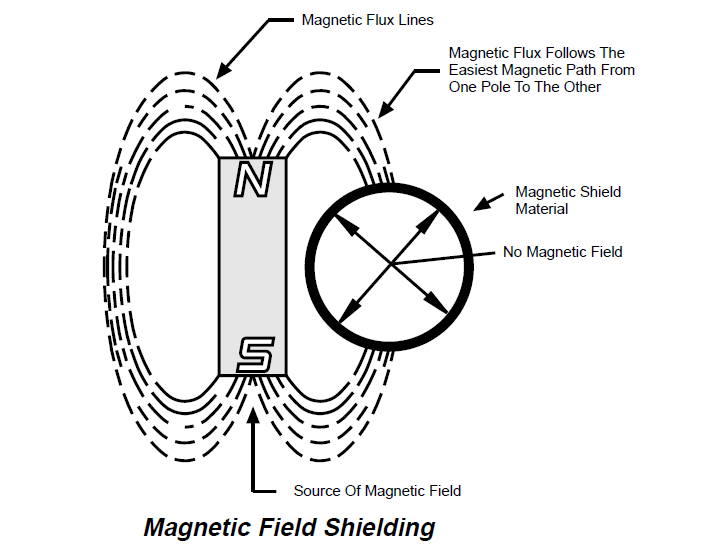
One way magnetic fields of the type involved in this kind of interference are created in grounding conductors is by any continuous or nearly so, flow of current in externally attached supplementary equipment grounding conductors, grounding electrode conductors, structural steel members, piping, ducting, cable trays, wireways, etc. Stray ground currents in any of these items can produce the same effects on the CRT’s screen.
Fortunately, the effects of these interfering magnetic fields falls off exponentially with distance between the source of the field and the equipment that is being affected. Also, the orientation of the CRT to the lines of force of the magnetic field affects the severity of the problem. Therefore, increased spacing and reorientation of equipment is often the first and a successful step, in the resolution of the problem.
Another practical approach to reducing the effects of magnetic fields on a CRT is to increase the number and location of any grounding/bonding connections between grounded items, including the one involved in the interference. For instance, more bonding between cold water piping, building steel, and grounding electrode conductors often solves the problem. (See Fig. 2)
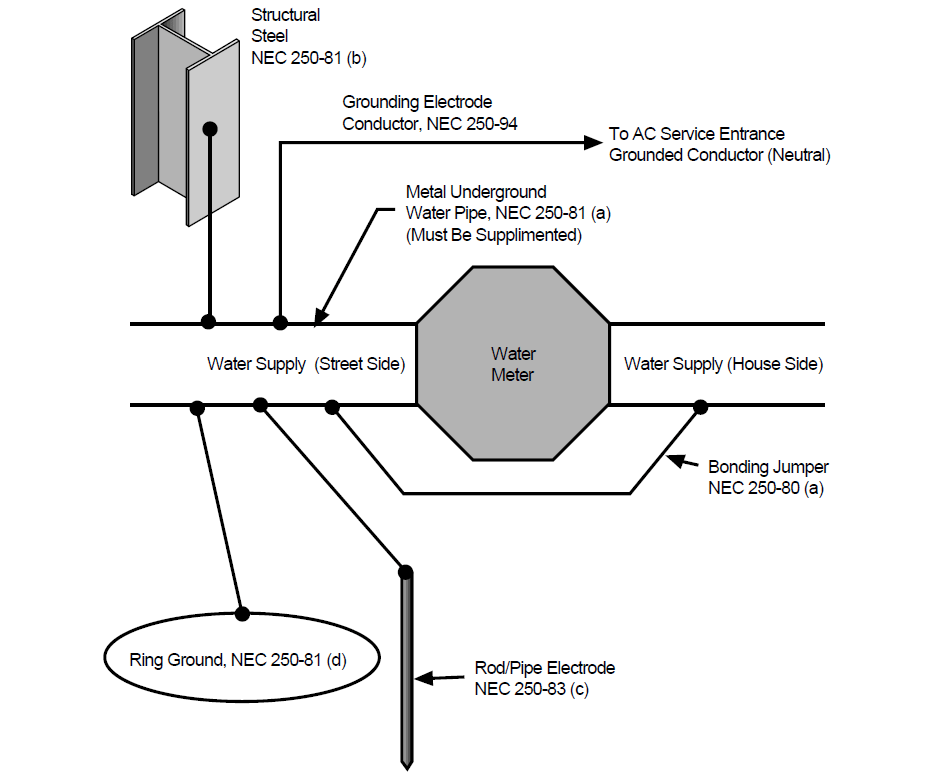
The foregoing procedure generally works since it breaks up the currents from one conductor into several smaller ones. In example, since the magnetic field surrounding a conductor is proportional to the current’s amplitude, the process of providing multiple paths for a current reduces the current in any one conductor and therefore the stray magnetic field being emitted from it.
The best approach of all however, is to find out how the unwanted current is getting into the conductor and to fix the problem in accordance with NEC requirements such as per Section 250-21, Objectionable Current On Grounding Conductors.
Do you face any problems with grounding? Share with us.
Reference: erico
If you liked this article, then please subscribe to our YouTube Channel for PLC and SCADA video tutorials.
You can also follow us on Facebook and Twitter to receive daily updates.
Read Next:
- Where to Terminate the Cable Shield?
- Advantages of Grounding
- Questions on Hazardous Area Safety
- Different Types of Maintenance
- Study about Electrical Standards
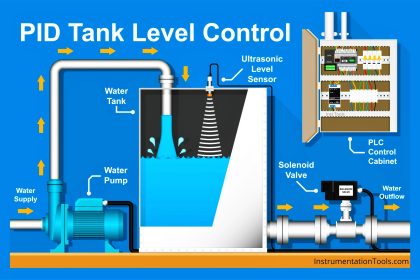
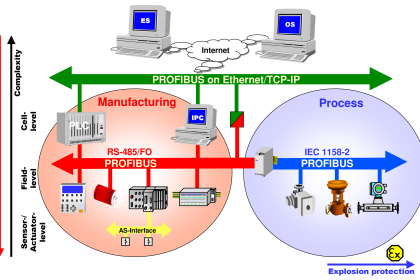

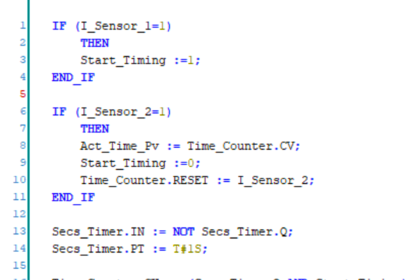
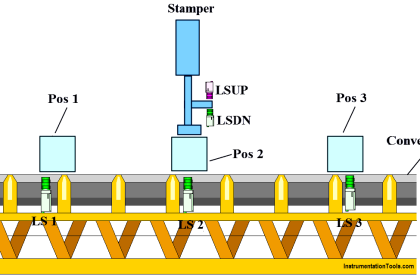
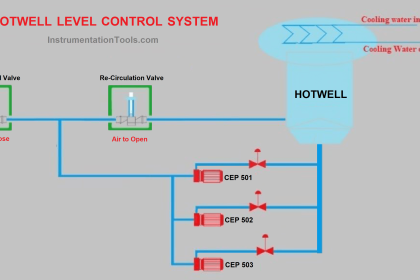
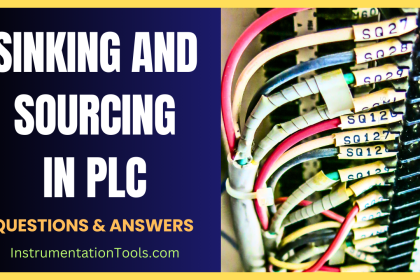
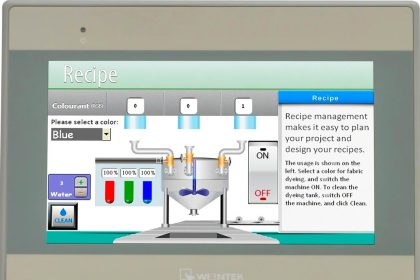
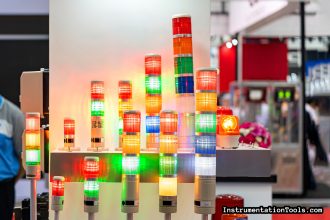

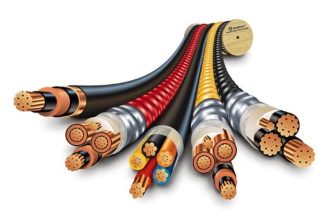
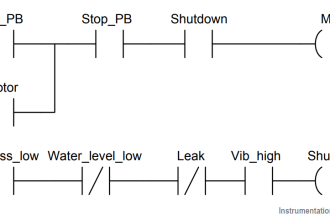


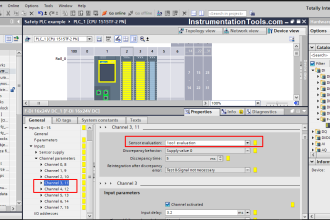
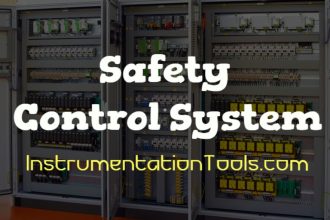

Many thanks